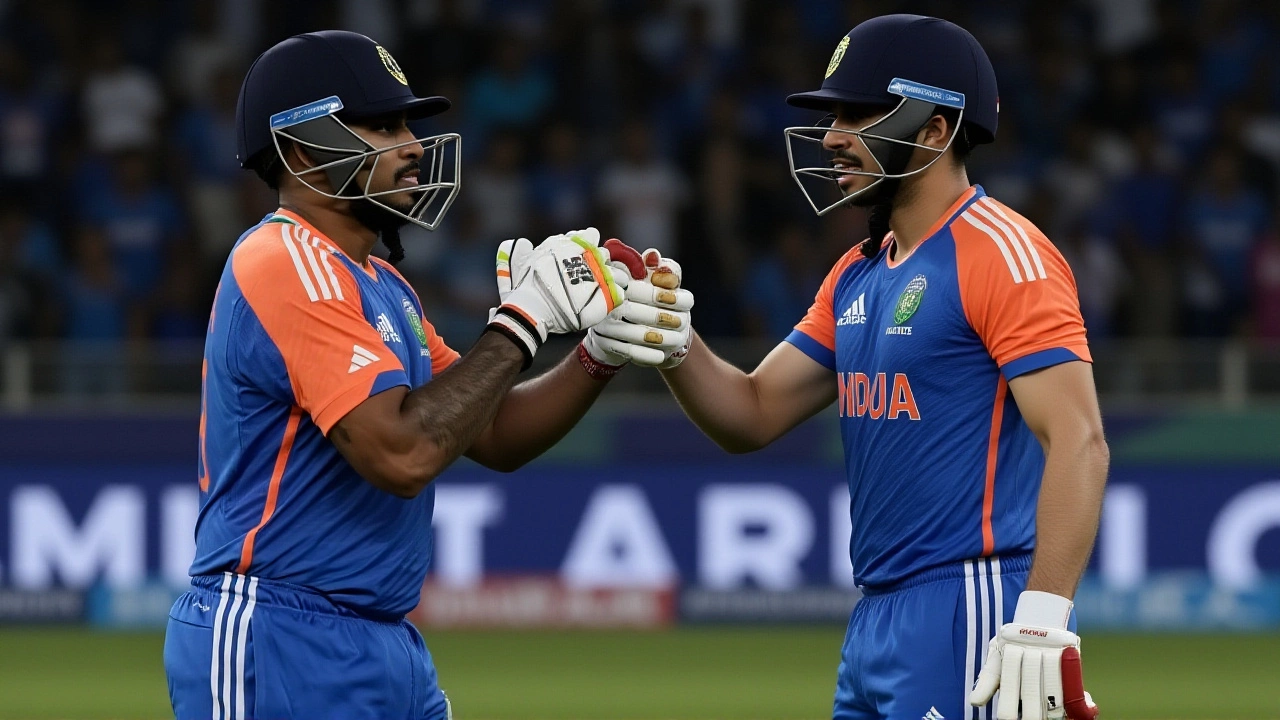On September 10, 2025, at the Dubai International Cricket Stadium, India delivered a masterclass in dominance, bowling out the United Arab Emirates for a staggering 57 runs — the lowest total in Asia Cup history — before chasing it down in just 4.3 overs. The DP World Asia Cup 2025Dubai match wasn’t just a win; it was a statement. Kuldeep Yadav spun magic with 4 for 7, while Shivam Dube added 3 for 4, turning the UAE innings into a collapse that left even seasoned observers speechless. By the time Shubman Gill guided India to victory with a smooth on-drive, the scoreboard read 54 for 1 — and the gulf between Full Member and Associate cricket had never felt wider.
The Collapse That Shook Dubai
UAE captain Mohammad Wasim, who won the toss and elected to bat, looked confident — until he wasn’t. His 30 off 16 balls was the only resistance. The top order, starved of rhythm and intimidated by India’s pace and spin, crumbled like dry clay. Jasprit Bumrah struck early, and within 10 overs, UAE was 31 for 5. The ball tracker confirmed several close calls, but the real drama came from the stands. Spectators, estimated at 25,000, fell silent as wickets tumbled. One moment stood out: when Indian batter Suryakumar Yadav withdrew an appeal after a sharp edge, sparking debate. Analyst Aakash Chopra on ESPN’s T20 Time Out asked, “Why go down that route?” — hinting at the unspoken tension between sportsmanship and aggression in high-stakes cricket.
India’s Chase: Precision Over Power
India’s chase wasn’t about brute force — it was surgical. Openers Abhishek Sharma and Shubman Gill raced to 48 for 1 before Abhishek fell lbw to a clever slower ball. Enter Suryakumar Yadav. His first run? A trademark late cut, the kind that makes commentators pause. “What a way to get off the mark,” said ESPN’s commentator. “How many times have we seen him play that shot?” He didn’t need to score big — just stabilize. He faced just 11 balls, scoring 9, before handing over to Gill, who finished with 32 not out. The crowd rose as he drove the winning runs through midwicket — no celebration, just calm efficiency.
Shivam Dube: The Man Who Plays for the Nation
Post-match, Shivam Dube didn’t mention his 3 for 4. He spoke of pride. “I am always prepared,” he told reporters. “Whoever I’m playing, I want to do a miracle on the ground so that I can make my country proud.” ESPN noted he was playing “free from IPL shackles” — no franchise pressure, just national duty. That mindset showed. His three-wicket spell included two lbw decisions, both upheld after reviews, and a caught-behind that had the umpire raising his finger before the batsman even turned around. It was clinical. And it wasn’t luck — it was preparation.
UAE’s Reality Check
For the United Arab Emirates, this was more than a loss. It was a mirror. Coach Lalchand Rajput, the former Indian domestic coach, didn’t make excuses. “My batters were overawed by India’s big names,” he admitted. “We need to stop seeing them as legends and start seeing them as opponents.” Rajput’s words cut deep. UAE’s goal? Qualify for the ICC Men’s T20 World Cup 2026. But with this result, their path just got steeper. The Asian Cricket Council, based in Colombo, designed this tournament as a stepping stone — but for teams like UAE, it’s also a wake-up call.

What This Means for International Cricket
This wasn’t an anomaly. It’s the new normal. In the last five ICC tournaments, Full Member nations have averaged 120+ runs against Associates in T20Is. India’s 57 is the lowest ever in Asia Cup play. The disparity isn’t just skill — it’s infrastructure, funding, exposure. UAE’s players train in makeshift nets. India’s squad has access to AI-driven analytics, biomechanics labs, and world-class spin coaches. The Asian Cricket Council insists the tournament is about development. But when a team is bowled out for 57 in front of 25,000 fans, development feels like a polite word for humiliation.
What’s Next?
India moves into the Super Fours, where they’ll face Sri Lanka in their next match — a clash of titans. UAE, meanwhile, must regroup. Their next game? Against Hong Kong. A win there is now non-negotiable. But can they recover from the psychological blow? The answer will define whether they’re a team in transition — or one stuck in the shadows of giants.
Frequently Asked Questions
Why was India’s bowling so effective against UAE?
India’s attack combined precision with psychological pressure. Kuldeep Yadav’s left-arm wrist spin disrupted UAE’s rhythm, while Dube and Bumrah exploited the slow Dubai pitch. The UAE batters, unused to such high-pressure scenarios, froze under the spotlight — a recurring issue for Associate nations facing Full Members in major tournaments.
How does this affect UAE’s chances of qualifying for the T20 World Cup 2026?
This loss severely weakens UAE’s position. They now need to win all remaining group matches and hope for favorable results elsewhere. With only two wins needed in the Super Fours to advance, and their confidence shaken, their path to qualification has narrowed dramatically — especially with rivals like Nepal and Hong Kong also competing fiercely.
What made Kuldeep Yadav’s performance so special?
Kuldeep’s 4 for 7 was the best bowling figures by an Indian in T20I history against an Associate nation. He used subtle variations in flight and pace, trapping batters in front with his doosra and turning the ball sharply. His economy rate of 2.27 — the lowest ever in a T20I innings under 20 overs — showed total control, something rarely seen against teams like UAE.
Why did Suryakumar Yadav withdraw his appeal?
Suryakumar reportedly felt the edge was marginal and didn’t want to exploit a questionable decision. While some analysts saw it as sportsmanship, others questioned whether it undermined competitive spirit. It sparked debate on whether elite teams should always push for every wicket — or if there’s value in restraint when the outcome is already clear.
Is this match indicative of a larger problem in international cricket?
Absolutely. The 57-run total is symptomatic of a structural imbalance. Associate nations lack funding, exposure, and high-level competition. While tournaments like the Asia Cup aim to bridge the gap, results like this highlight how far behind they’ve fallen. Without systemic investment — not just in players, but in coaching, facilities, and domestic structures — these mismatches will keep happening.
What’s the historical significance of this win for India?
India’s 57-run target chase in 4.3 overs is the fastest in Asia Cup history. It also marked their 12th consecutive win against Associate nations in ICC tournaments since 2016. With this performance, India has now won 13 of the last 14 Asia Cup matches, reinforcing their status as the tournament’s undisputed powerhouse — and a global T20 force.

